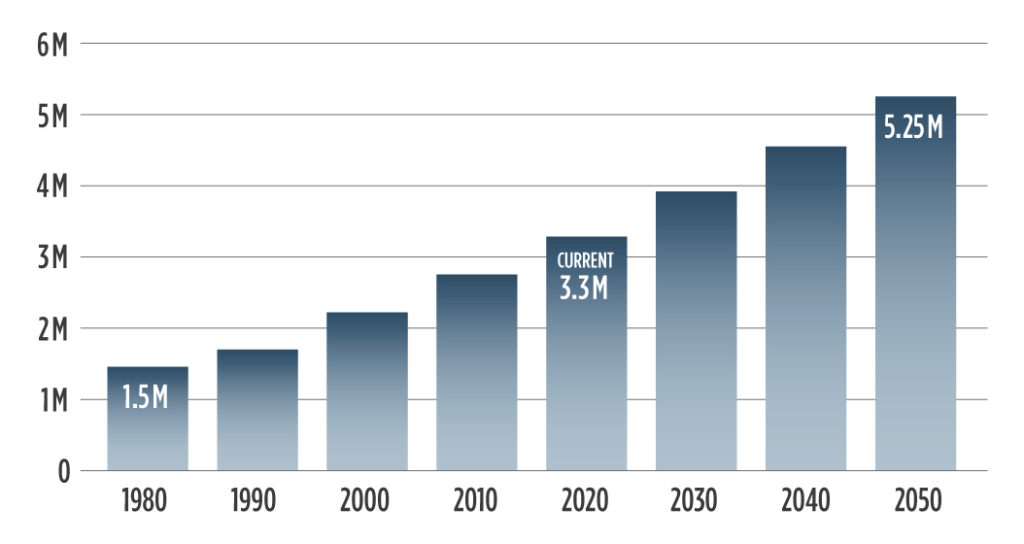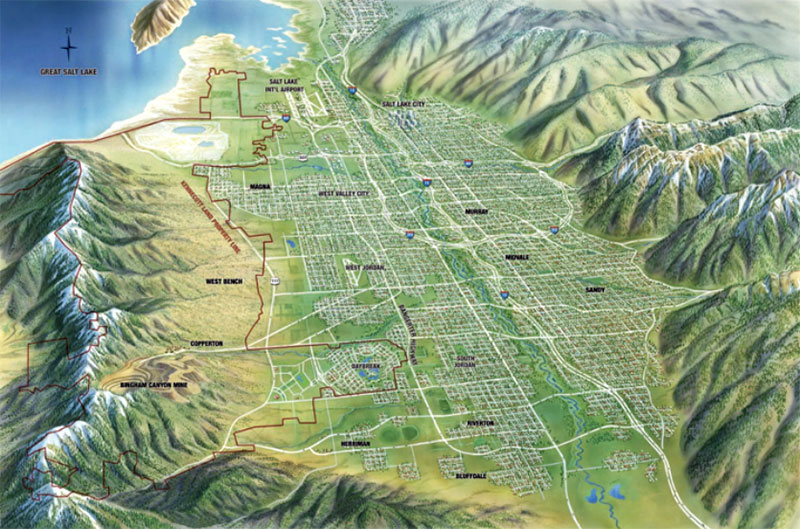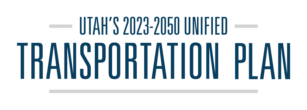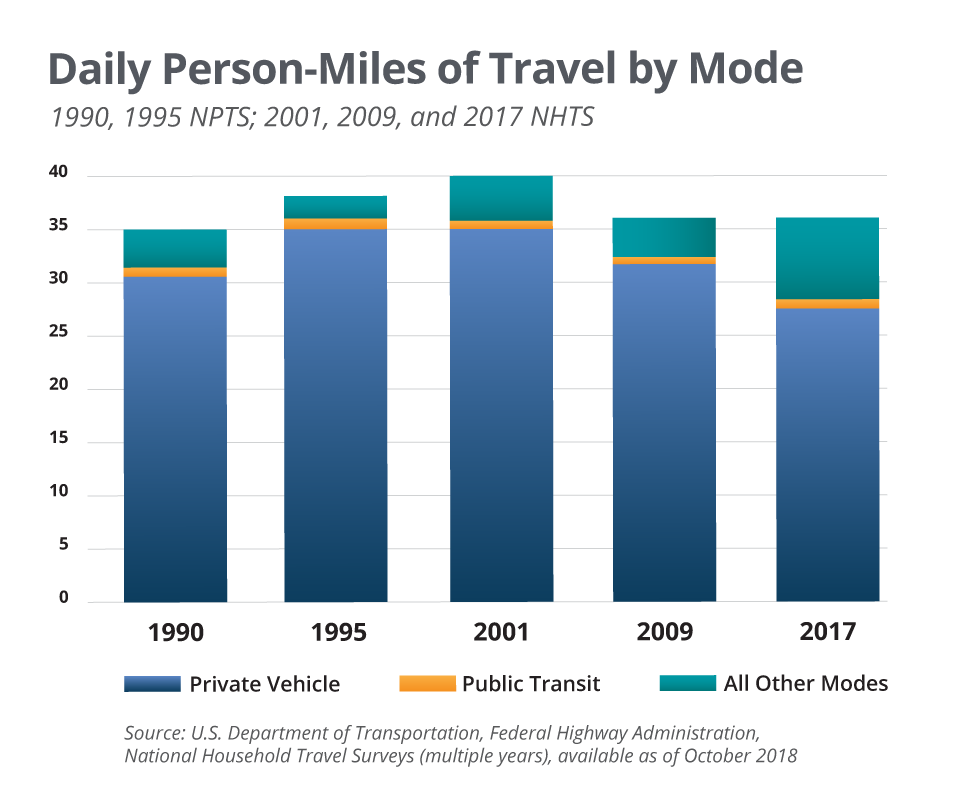Growth & Change in Utah
We cannot plan transportation in a vacuum. It affects and is effected by a variety of external factors, and those factors are changing around us.
Rapid Population Growth
From 2010 to 2019, Utah is the fastest growing state in the nation according to the Census Bureau. Utah is also highly urbanized: the state’s population is projected to increase from approximately 3 million people in 2015 to over 5 million in 2050, and much of that growth is expected to occur in urbanized areas of the Wasatch Front.

Kem C. Gardner Policy Instutute estimates that Utah will add another 2 million people by 2050 — nearly doubling the current population.
A Need to Grow Smarter
The Wasatch Front is physically constrained by mountains and lakes. In addition, many of the region’s remaining open areas are rapidly being developed. These constraints mean that it is essential to use innovative thinking about where and how we build in order to accommodate the additional growth coming to the region.

Changing Demographics
As our demographics continue to change, our transportation system will need to change with the preferences of our more diverse population. For example, the amount of driving declined by 24 percent between 2001 and 2017 in urban areas, compared to 19 percent in rural areas. Young people (25-34) in urban areas showed the greatest decline. We are also graying, and older adults need different options to get around. Transit supports a more accessible and inclusive city for older adults, along with ride-hailing services.
Sustained Economic Opportunity
Jobs are plentiful in Utah with an annual job growth of 3% or higher. According to the Utah Governor’s Office of Economic Development, Utah has the most diverse economy in the country. It is also one of the fastest-growing. This translates to an economic environment that is expected to have long-term stability and sustainability. However, this growth places additional demands on the transportation system, and we need to plan to accommodate and help sustain this growth.
Dynamic Transportation Industry Trends
The transportation industry and the way we all get around is evolving rapidly. Emerging and disruptive technologies such as mobility as a service (MaaS), connected and autonomous vehicles (CAVs) and the sharing economy are challenging the ways we plan, build and operate our system. This has implications for many of our foundational measurements of transportation performance that we need to include in planning considerations:
- Vehicle miles traveled (VMT) – How will new mobility options, such as ride sharing and the potential for connected and autonomous vehicles, impact VMT and how should we plan for it?
- Vehicle ownership – As the sharing economy and subscription services rise, will owning your own vehicle remain the default?
- Safety – As technology takes a greater role in operating our vehicles, what steps need to be taken to ensure the safety of all road users?
It is difficult to predict future travel demand due to the potential changes in transportation technologies and services. For instance,
- Transit ridership – What role will new technologies play in the efficiency, safety, and convenience of transit? With autonomous vehicles and doorstep to doorstep transportation services, will transit ridership increase or decrease?
- Changes in retail markets and delivery services – Will warehouse and delivery services replace current retail space? How should these impacts to the transportation network figure into future planning?

